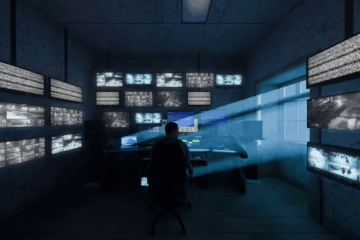How do you know how much work your remote MSP team is doing?
One word.
Accountability.
You can use all the software in the world to track that your remote staff has logged in and are sitting at their computers. But on what basis are you even judging “working?” What metrics and procedures prove to you that your staff is actually doing what is required of them?
This is where procedural documentation swoops in to hold your staff accountable to your guidelines.
We know our 40 remote staff members here at Support Adventure – the MSP Staffing Company are working because they have been leaving proper notes in well-documented systems for years now. These systems create productivity routines that grow the business without our founder ever having to make unsuspecting phone calls to each staff member to make sure they are really working.
Accountability is one of our core values that has grown our business exponentially in only four years.
So how exactly can you do this too?
Let’s get into it.
Establishing accountability systems beats manually tracking your remote team’s every movement

We understand that if you are going remote for the first time, trusting your employees to do their jobs and not slack off might scare you somewhat. This is why employers default to tracking their remote staff with monitoring software. But you do not have to worry if you have created systems that account for them working and how they should be spending their time.
This is where accountability comes in, which is simply the learned routine of responsible actions and routines–routines of clocking in remotely, taking notes, showing up to meetings, delivering progress reports, keeping issues and projects moving forward, etc.
When your employees are autonomously holding themselves accountable to a list of defined expectations, then you don’t have to do that job of checking in on them all the time. Of course you should once in a while to identify anyone who is not following the written expectations they have been given, or better yet, give this role to a member of staff (a dispatcher) with documentation on how to do it. If they are routinely following your written expectations and you can check on the system to see their notes, you do not have to stress as much about whether or not they are doing their assignments.
There are a string of benefits when you create accountability:
- Your employees develop a responsible and methodical routine.
- An environment of less stress is created for everyone during the work week as they know what they have to do to fulfill their role.
- You develop mutual trust between your employees and yourself.
- Your employees enjoy working for a company that isn’t run by a neurotic, micromanaging boss.
- You enjoy working for yourself more when your systems are more automated after you trained your employees to create routines and systems for ensuring great results.
- You create an ideal remote company culture when you have pleasant working conditions.
- You have more time on your plate to fit in other tasks when you are not using that time to chase up your employees.
Documentation creates an effortlessly evergreen method of tracking your remote staff’s productivity
Having meticulous documentation for the use of your ticketing system is what truly fosters accountability from your staff. You should have a documented guide for how your system should be used and how notes should be written.
You’ll want to do the following when establishing this documentation:
- Create checklists for notes on how technicians are supposed to write technical information, and actions taken to resolve an issue.
- Create guidelines for how to write replies to clients.
- Create guidelines for how technicians should end their notes to provide a high-level summary of where an issue is on its road to completion.
- Create guidelines for how to categorize tickets for analytical purposes.
- Include in the documentation that technicians must write what the next steps are for resolving an issue.
- Include in the documentation that technicians must write what resolved an issue before closing a ticket.
- Create guidelines for how escalations are performed.
- Create guidelines for what to do when a technician is waiting for a client or vendor in order to progress a ticket to the next stage.
In order to make sure the technicians are actually doing these things, it is a good idea to hire a dispatcher to check the tickets daily or weekly. They can also discipline the techs who are not quite keeping up with the system. They will be more likely to conform to the guidelines when they know someone is checking in on whether they are doing that.
There are some other added bonuses that come along with documentation, which are:
- New staff will be more self-reliant in following instructions after being trained with documentation.
- Documentation creates clarity of what to do, which reduces the amount of times your staff disrupts you with the questions like “What status should I mark this ticket as again?”
- Well curated procedural documentation, which the staff follow, adds the groundwork for the automation of how your business functions and the ability to track metrics on performance and productivity.
When your staff is using the ticketing system in a methodical way, everyone will work more cohesively to resolve and transfer issues as a team.
Never underestimate how detailed the ticketing system’s role should be defined. Do not assume it is obvious or common sense as to what your employees should do. You want to remove as much confusion as possible, and so the ticketing system documentation should include details like:
- Change ticket status to “In Progress” when _______ happens.
- Change ticket status to “Resolved” when ________.
- Escalate ticket to (person) when technician can not resolve the ticket within __ minutes.
- Include either a) NEXT STEPS ________, b) WAITING FOR ________, c) ESCALATION REQUIRED or d) TICKET RESOLVED as the last line of each ticket.
- Always schedule any necessary follow ups or next steps forward on the calendar, so there is always a future event scheduled for each ticket.
- Only send internal notes to a client on a ticket when ___________.
Your documentation also needs to define rules for assigning tickets, whether one assigns a ticket to themself or another staff member handles intake and assignment. It should also be clear how tickets get assigned, whether from a dispatcher, self-serve or automatic assignment workflow rules.
Time tracking also needs to be detailed as well.
If you have not established metrics through which productivity should be judged, time tracking will become an inconvenient headache for you.
It is fair and just if you have an achievable daily requirement for the amount of hours your employees should be working, but how do they round up and account for the whole day of time logged in their notes? Are they supposed to track every minute of every day? Would you like them to fill out 5-10 minute visiting the washroom or making coffee tickets? The easiest way is to allow them to round up issues to 15 minute increments. This pads the day and gives them a goal which is achievable.
We have noticed over the years that a lot of great MSPs have a time tracking metric where technicians must log 80% of their work day in time entries. This fair, but 100% is not.
From observing some common mistakes MSPs make, here are some things to consider to have more organized time tracking:
- Make it clear in writing to your technicians what the ticket time tracking rules are, as well as any technicalities and special tickets/codes they should log other time spent for things like meetings and lunch breaks.
- Detail how their time should be logged… Is it 15 minute increments? Is it minute-by-minute? Does the system round up automatically?
- Check everyday that the conditions you set are being done as instructed, and if not, reiterate it and ensure everyone is in the know and on board.
- Documentation and training should account for how lunch and other breaks work.
- Documentation should account for how other disruptions work, such as getting coffee or going to the bathroom.
- If employees are not logging their time correctly, speak to them about it or have another manager do so.
- Avoid having your technicians log every minute of the day. It is too arduous and inconvenient, and it does not inspire good work out of your technicians.
- Use time tracking software like Tsheets to make clocking-in simple.
Sometimes your engineers do not have enough work to do, and that may be a reason why they do not have enough hours logged of actual assignments they completed. In that case, you can instruct them to do other tasks during idle time. Housekeeping tasks are great for idle time, such as:
- Auditing documentation
- Checking server/portal passwords
- Checking that all other info is up to date.
- Updating user lists for clients
- Patching various systems
- Anything else which helps to proactively reduce client issues, escalations or any other potential for confusion.
Once again, it is important to establish these procedures in documentation. You can include a table in your documentation that looks something like this.
| Daily Tasks | Idle Tasks |
| Look at each ticket assigned to you, ensuring you are aware of the situation. | Check that documentation is up-to-date. |
| Ensure you have written detailed notes for all tickets so that anyone looking at the ticket knows what the next steps are and what has been done previously | Update user lists for clients and machines and any other information which may have changed since someone last looked at it, cleaning up decommissioned users and devices while ensuring any new additions have been included in the lists. |
| Schedule a time to take next steps or follow up on any “waiting external” tickets. | Make sure all login credentials and other technical details in ITGlue or the documentation system are actually valid and produce working login abilities and connectivity. |
| Look at your time sheet from the day before and ensure all time is entered correctly. | Do proactive maintenance on client systems. Look at alerts. |
| Ensure you are prepared for any meetings that are scheduled. | Look at the expiry dates of hardware warranties, domains and software licenses. |
The key is to set expectations of what your staff is supposed to do and how they are supposed to do it. Once you train them and they get in the right habit, you do not have to monitor their every move like a hawk, and your time will become freed up to manage your team from wherever you want.
Weekly meetings are essential to create regularity in the roles of your staff
One last strategy for keeping track of your remote team’s productivity is to have weekly meetings. We have our remote team meetings with Zoom every week for all of the departments in the company. The reason this works so well for keeping track of what your employees are doing is because:
- Regularity is developed in terms of what is expected of your remote staff every single week.
- Task and progress reports are presented in the meetings to keep you updated. This allows you to not have to check on every person everyday.
- When team members are expected to produce certain results every week, they are incentivized to not get lazy working from home and deliver on what they say they will have ready for the next meeting.
- You can edit assignments for employees based on what has or has not been working.
- Weekly meetings give everyone, including yourself, more objectivity about results as opposed to watching too closely every single day.
With our team meetings, a senior manager is usually the host, and they address a list of topics to be discussed. This has been our routine for years now, and has created incredible consistency and cohesion in what is expected of everyone. Here are some helpful tips to create regularity:
- Have recurring agenda items for every meeting.
- Keep a shared Google Doc for the agenda items that everyone can see.
- Take notes from the meetings that everyone can see and reference later.
- Establish “next steps” of what you expect from each employee for the following week’s meeting.
- Make time for chatting in your weekly meetings so that your staff feels connected to you.
Annoying calls from the boss are a thing of the past…
When you have set up the expectations of your team with detailed documentation and self-accountability, you can see what staff are doing without the stress of tracking them down to see what they are working on. Being able to grow your business by calmly watching everything operate in an automated manner is truly the best confirmation that your staff is actually working.
We hope that keeping tabs on your staff is a lot less overwhelming now that you have read this whole article. Let us know in the comments if you have any other questions about this!



1 Comment
Why having the best stack won’t save your MSP - Support Adventure · March 23, 2023 at 6:54 am
[…] Making documentation, checklists and other types of guidelines are the best for creating responsible routines for your staff. […]